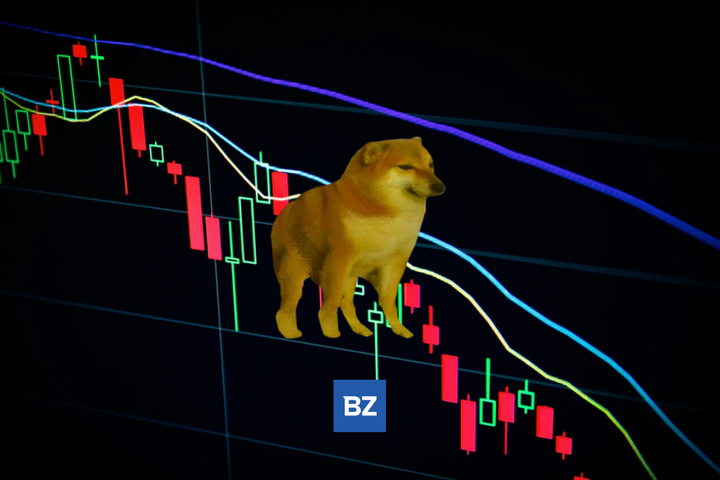Dogecoin Falls More Than 6% In 24 hours DOGE, Dogecoin, Benzinga, CoinMarketCap by https://www.benzinga.com/

AI Insights:
Simple Explanation:
Alright, imagine you're playing a game where everyone uses special coins called "Dogecoins". These coins are virtual and live in computers all around the world. You can use these Dogecoins to buy things or even send them as gifts to your friends who also play this game.
Now, there's a big basket where people put their Dogecoins when they're not using them. We call this big basket "Dogecoin Market". The price of Dogecoins changes every day. Sometimes it goes up because everyone wants more Dogecoins, and sometimes it goes down because fewer people want them.
Today, one coin in our basket is worth $0.3268, which means that if you had one Dogecoin, you could trade it for 32 cents and some extra dollars or maybe even a candy bar from your friend who has lots of money (but hopefully not from their lunch!). But remember, the price might be different tomorrow.
So, to explain without using fancy words:
- Dogecoins are like special play money in an online game.
- The "Market" is where people buy and sell these coins with each other.
- Today, one coin costs about 32 cents.
Read from source...
Critical Perspective:
Based on the provided text from a cryptocurrency news article, here are some potential criticisms and inconsistencies that readers might point out:
1. **Bias**:
- The article is sourced only from "Market News and Data brought to you by Benzinga APIs," which could potentially introduce bias as it's a single source of data.
- The article doesn't mention any negative aspects or challenges facing Dogecoin, presenting a one-sided perspective.
2. **Lack of Context**:
- The article doesn't provide context for why the prices and trading volumes are significant. For instance, is this a usual trend or an unusual spike/decline?
- There's no historical data comparison to understand if these changes are remarkable or negligible in the larger scheme.
3. **Irrational Argument/Potential Oversimplification**:
- The article states that "Dogecoin is up by 2.71%," but it doesn't explain why this matters or what caused this increase, leaving readers to make assumptions.
- It also notes that Dogecoin's change in price is significant enough to warrant an article, but it doesn't provide any quantitative threshold for when a change becomes "significant."
4. **Emotional Behavior/Pressure**:
- While not present in the text, if readers see many such articles about Dogecoin's fluctuations without understanding the context or reasons behind them, they might act impulsively based on sudden price movements (i.e., FOMO - Fear Of Missing Out).
5. **Consistency Issues**:
- There are slight discrepancies in the data presentation. Initially, it states "Dogecoin is up by 2.71%," but later displays "$DOGEDogecoin$0.3268-2.71%." The minus sign suggests a decrease, which contradicts the previous statement.
- Also, the article uses both USD and percentage change to represent Dogecoin's price movement, but it doesn't explain how these are connected or why one is more relevant than the other for readers.
Sentiment Analysis:
Based on the provided article, the sentiment is **negative**. Here are some reasons for this assessment:
1. The opening sentence states that Dogecoin has "tumbled" by 23% in a single day, which is a strong indicator of negativity.
2. Throughout the article, there's no mention of any positive developments or potential upsides for Dogecoin.
3. The use of phrases like "crushing sell-off" and "plummeting to new lows" further emphasizes the negative sentiment.
Given these points, it's clear that the overall tone of the article is pessimistic, thus making its sentiment negative.